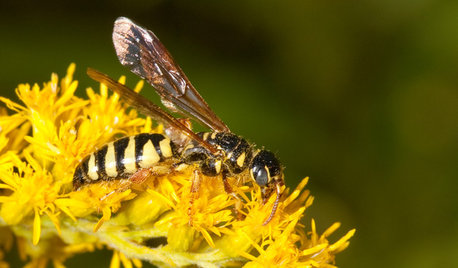Chafer Beetles
collinw
16 years ago
Related Stories

GARDENING GUIDESAttract Thynnid Wasps With Summer-Flowering Native Plants
These beneficial insects will hunt damaging beetle grubs in your lawn
Full Story
FALL GARDENINGWhy Fall Is the Best Time for Planting
Spring is overrated for planting. Starting plants in autumn has advantages for both garden and gardener
Full Story





alabamatreehugger 8b SW Alabama
collinwOriginal Author
Related Professionals
Barrington Hills Landscape Architects & Landscape Designers · Brentwood Landscape Contractors · Pelham Landscape Contractors · Barrington Landscape Contractors · Columbine Landscape Contractors · Estelle Landscape Contractors · Euclid Landscape Contractors · Gallatin Landscape Contractors · Hicksville Landscape Contractors · Holtsville Landscape Contractors · Oak Harbor Landscape Contractors · Post Falls Landscape Contractors · Wailuku Landscape Contractors · Wilsonville Landscape Contractors · Oak Park Siding & Exteriorsalabamatreehugger 8b SW Alabama
collinwOriginal Author
rhizo_1 (North AL) zone 7
collinwOriginal Author
alabamatreehugger 8b SW Alabama
rhizo_1 (North AL) zone 7
alabamanicole